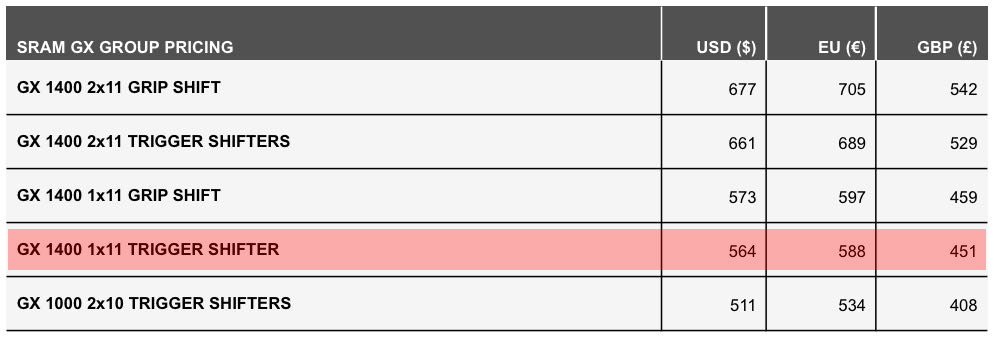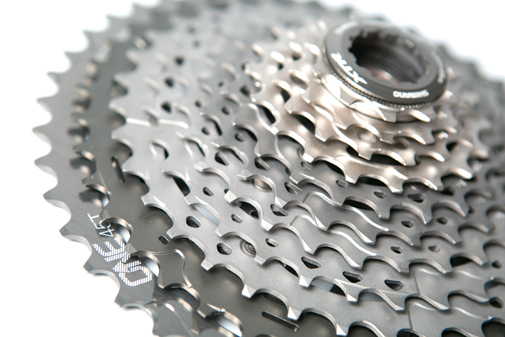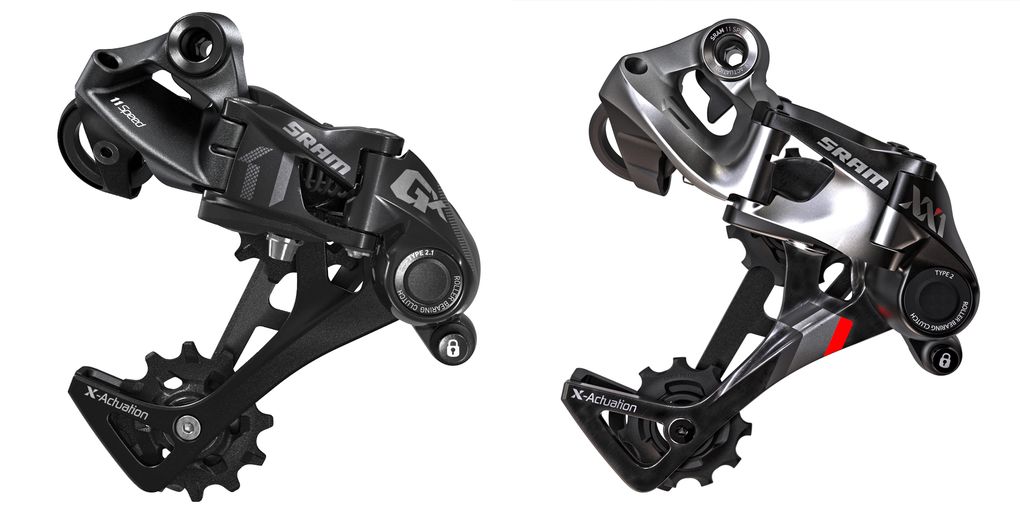
2015 SRAM GX launches | The trickle down continues
We often bemoan the sometime astronomical cost of bike parts, £300 cassettes, carbon cranksets knocking on the door of £500 and a pair of tyres for over £100. If you are heading down the dream build route it gets expensive. If you want the top notch kit then you have got to be digging deep but what are you actually gaining aside from uplift kudos? Aside from ‘ooh’ and ‘aah’ point scoring you are gaining performance and on the whole, if cared for, longevity. That’s not to say the components lower down the SRAM spectrum aren’t going to last as long just that they are going to gain weight and lose a bit of bling. To be honest a bit of extra weight can be a reassuring thing, especially if you are good at bouncing derailleurs off rocks and tree stumps? Our man Ed Haythornthwaite wrote a piece for the mag a couple of years back about this trickle down effect and you should give that a read right here.
SRAM have done a hell of a lot of innovating in the recent past, from the acquisition of German company Sachs to taking Gripshift technology onto the bikes of Greg Herbold and John Tomac to speccing it on classic bikes like the Stumpjumper, SRAM were off. The starting gun might have cracked loud and clear in Chicago but the gears were still grinding in Japan and there was a long way to go.
The fact is SRAM have come that distance, they innovated the one-by drivetrain and have developed numerous other things along the way, their mantra of ‘Tweak, Refine. Tweak, Refine. Leap Ahead’ seems to hold true. This latest release shows a clear link between the technology employed in their top end components and the best value parts you can bolt to your bike. SRAM have been clever with the visuals too, scroll back up and take a look at the XX1 and new SRAM GX rear derailleur, pretty close isn’t it? So what you have available now is a drivetrain system that makes these refinements in technology from the top end of the SRAM product range and applies it to lower level components. Aren’t we all bloody lucky!?
Let’s take a look at the main bit’s we need to know about, that big cassette, the thing that moves the chain up and down at each end and the levers we all mash round and round to get us back to the top of the fun stuff.
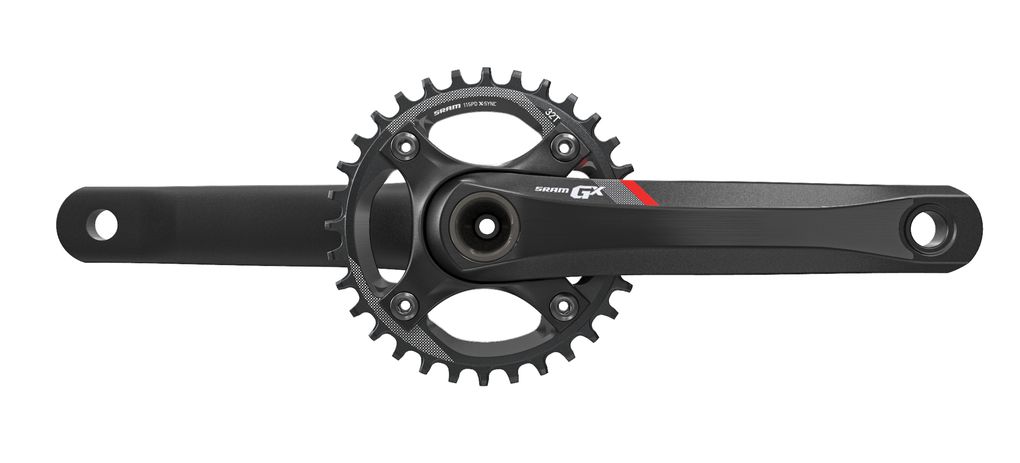
Cranks
Comparing to the top end is a good way to highlight the advantages of this groupset from a technology and value perspective. Yes if you are buying direct and picking up a German brand then you might well be treated to the top end gear but lets say you are investing in something more bespoke. You have chosen a good frame, invested in the right suspension and now you just need to get all the parts in between. Taking 175mm cranks with a 32 tooth ring the XX1 comes in at 645g (upto £380) and the GX lands at 680g (£119), that’s hefty for 35g of additional weight.
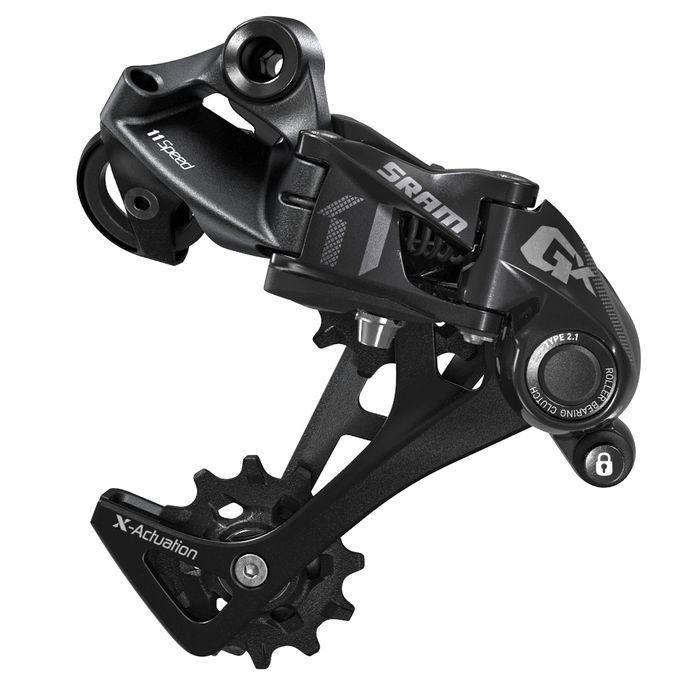
Rear derailleur
More of the same here with the actuation technology shared with XX1, X-Sync pulley technology and the nifty Cage Lock system that makes wheel removal straight forward. The weights and measures aren’t to be sniffed at too, the GX only gains 45g on the XX1 but keeps the important acronyms SRAM commit to the top end derailleur. The looks are different but on the whole the form factor of a modern SRAM derailleur is right there waiting for you.
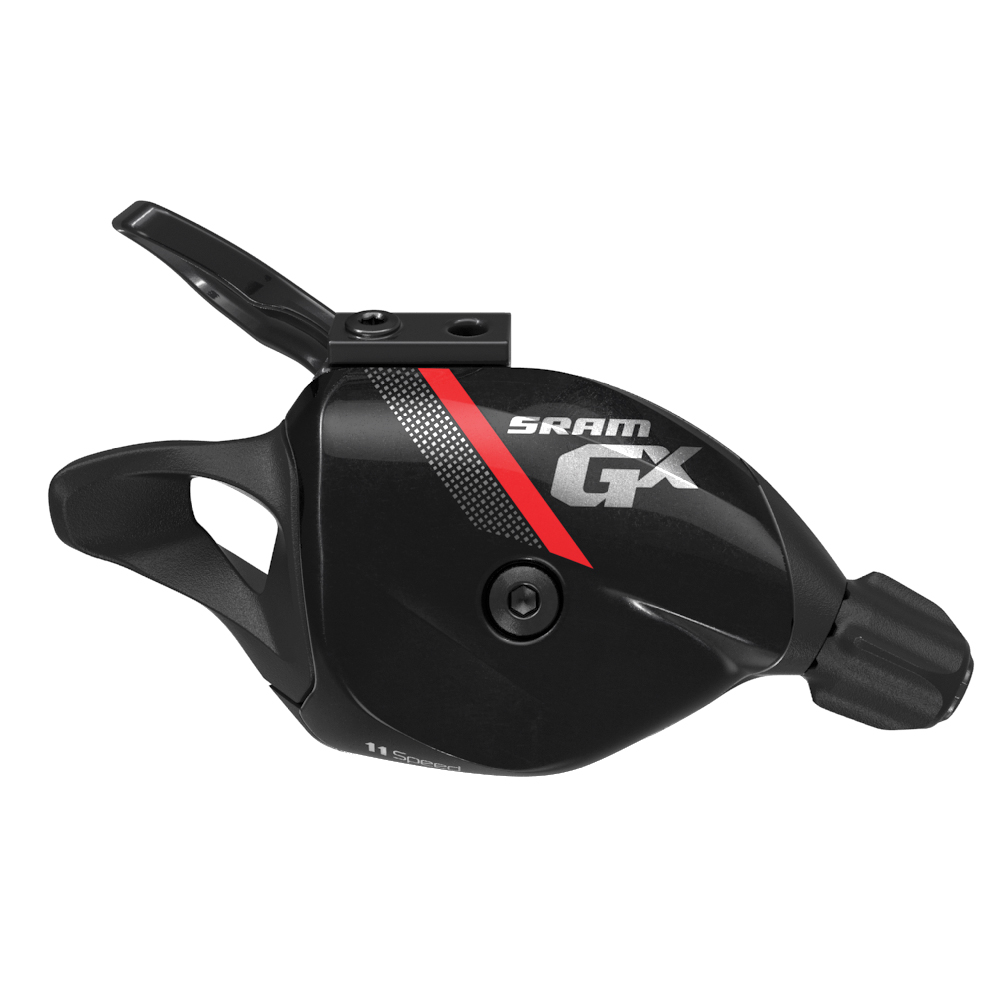
Shifter
As with the rear derailleur the majority of technology is maintained in the new SRAM GX shifter, the only part of SRAM’s technology that isn’t there is ZeroLoss. We’re not expecting this to mean shifting is slow and going by the X01 setup we have been using for the last 6 months things look good. Only 31g gained by GX over XX1 too so that won’t worry too many of you, and can be saved again if you just eat the Mars bar in your bag before you ride, easy!
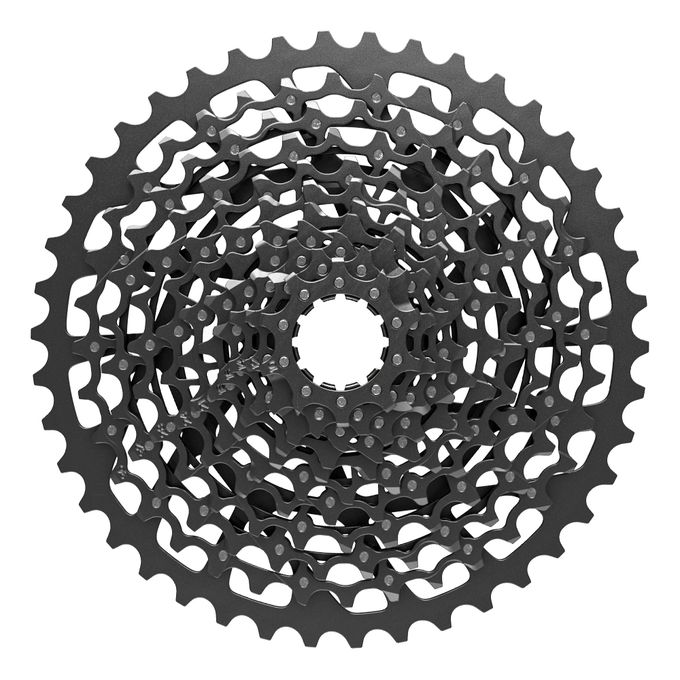
Cassette
This is the one that often makes wallets cower and rightly so, the current XX1 cassette is an engineering marvel but in the same breath is bloody pricey if you are shelling out during a build (£338 RRP). All but one of it’s sprokets is machined from a single block of aluminium with the largest cog pinned to the rear completing the big gear ratio. For the GX this pinning technology has, you guessed it, trickled into the full cassette. The whole thing is made up from stamped cogs joined together with 123 steel pins. Again SRAM have worked to maintain the look of the GX’s elder and more expensive rivals by structuring the cassette in a similarly hollowed out way. From a weight perspective this is where the ‘biggest’ numbers are added but that’s a mere 65g.
What does it all mean?
Well in the main it means that buying a good quality groupset with proven technology is now readily available for a reasonable price, a quid over £450 for a full setup is pretty reasonable when you can spend the same on just a set of cranks. All in all this seems like a good deal from SRAM, are there negatives? Well we are yet to try out the drivetrain so yes there could well be issues but the history is good and the technology seems to have worked well thus far so the signs are good. Here’s the pricing info:

